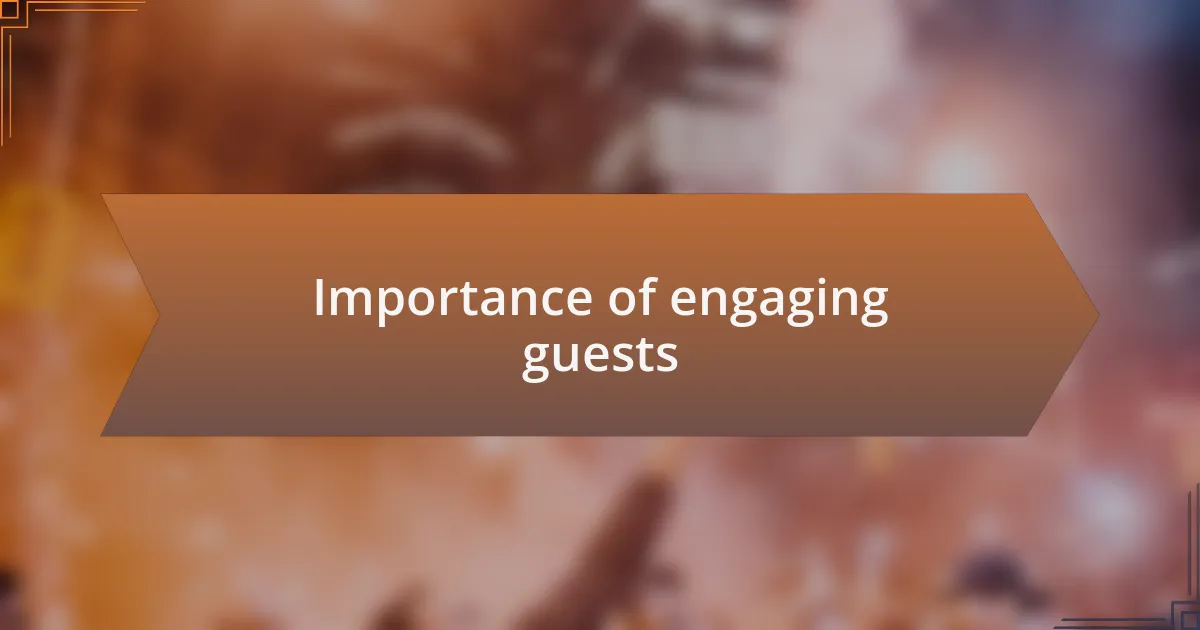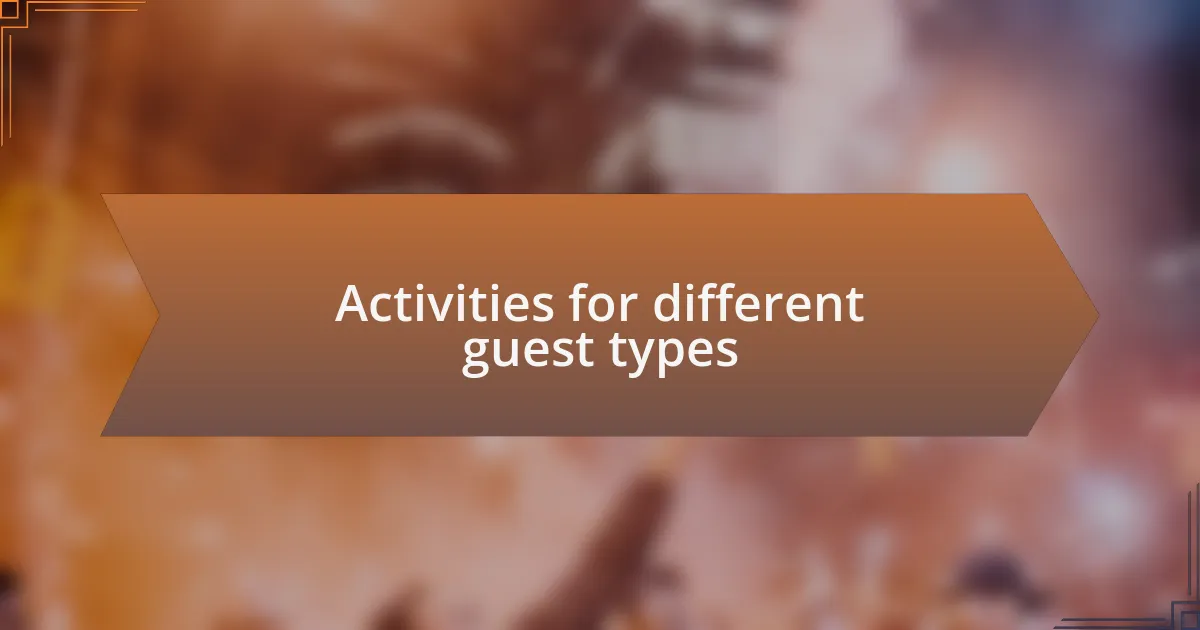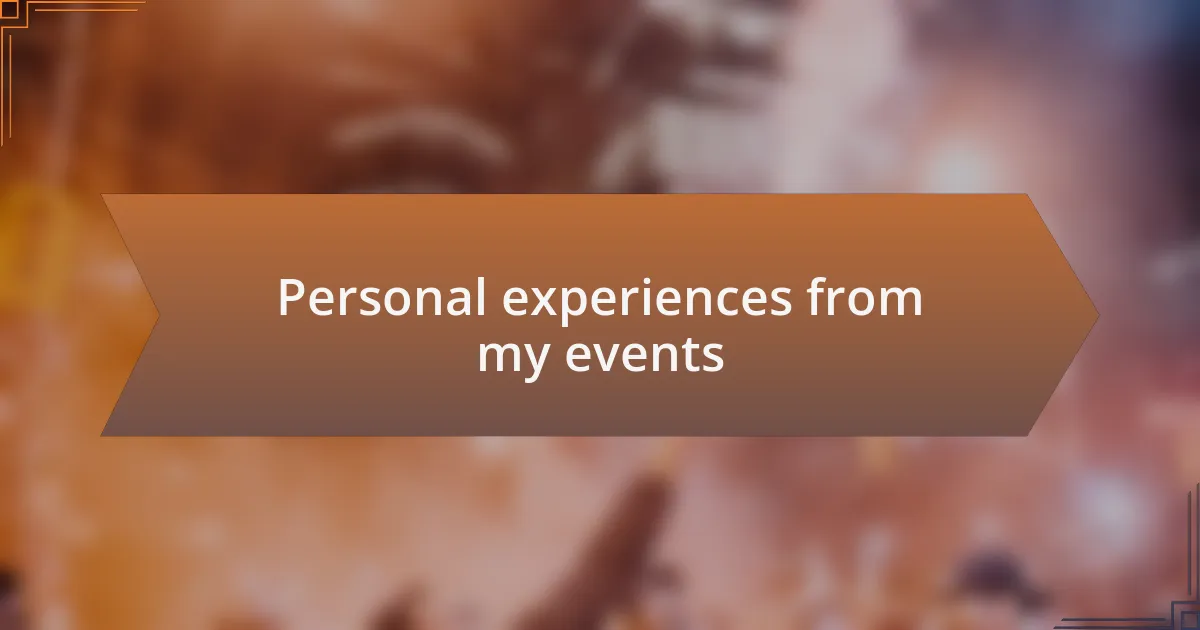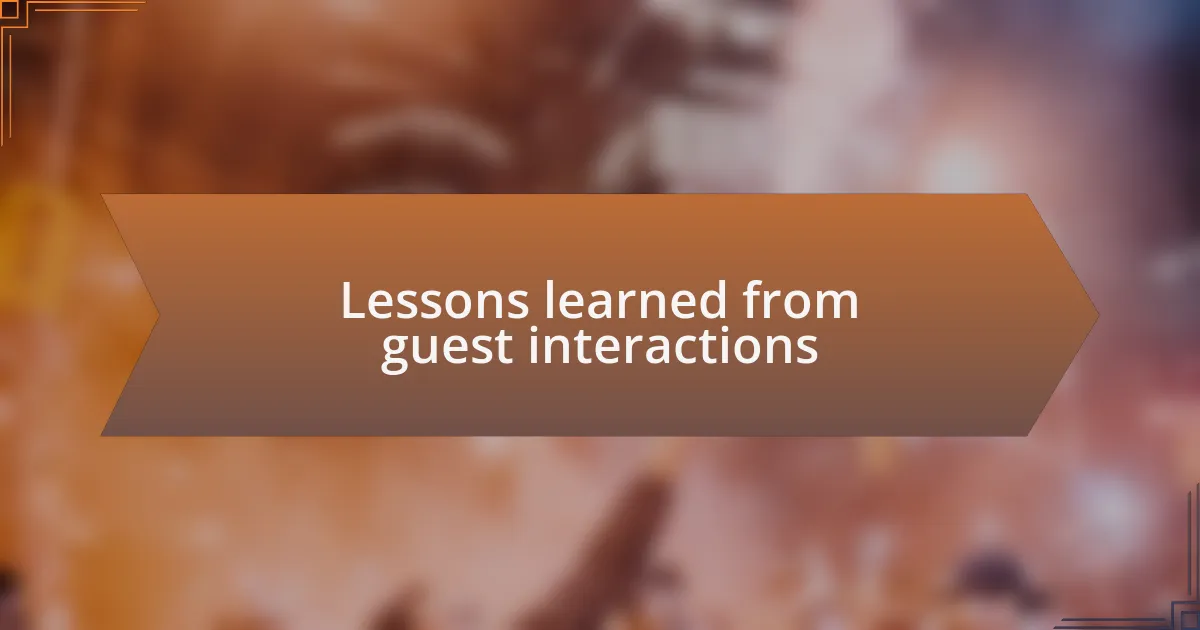Key takeaways:
- Event downtime can foster connections or create awkwardness; engaging guests transforms this time into networking opportunities.
- Incorporating interactive elements, such as games or storytelling, enhances participant engagement and promotes lasting relationships.
- Tailoring activities to various guest types ensures a welcoming atmosphere, potentially using art, quiet spaces, or gamification to cater to different preferences.
- Utilizing technology, like live polling and social media, can enhance interaction and connection among attendees during downtimes.

Understanding event downtime
Event downtime is often perceived as a lull in the action, but it’s actually a critical part of the overall experience. I remember a conference I organized where, during a break, guests seemed unsure of what to do with themselves. That moment, I realized that downtime is a double-edged sword; it can foster connections or create awkwardness.
Think about it: how often have you found yourself in a quiet room, waiting for the next session to start, feeling the tension? It’s in those moments that the energy in the room can shift dramatically. I’ve found that engaging guests during these breaks can transform downtime into an opportunity for networking or even learning.
Incorporating activities or conversational prompts can really change the atmosphere. I once set up small discussion groups during a workshop’s downtime and was amazed at how attendees, who had been strangers moments before, began to share their insights and experiences enthusiastically. Isn’t it fascinating how a little encouragement can break the ice and spark meaningful interactions?

Importance of engaging guests
Creating a welcoming atmosphere during downtimes is essential because it helps maintain the event’s momentum. I recall a networking event where, without any activity planned during a break, attendees scattered and sat alone, scrolling through their phones. It hit me hard—when guests feel disconnected, it can undermine the overall purpose of the gathering.
Engaging guests doesn’t just fill silence; it reignites enthusiasm and fosters collaboration. One year, I introduced icebreaker games during the downtime of a seminar. What surprised me was how participants, who initially kept to themselves, began laughing and chatting freely. It transformed the environment into one of camaraderie, demonstrating that even a simple game can have a profound impact.
Moreover, when guests feel involved, they’re more likely to remember the experience positively. I once facilitated group activities that encouraged folks to share their goals for the event. The conversations that sparked not only deepened connections but also led to collaborations long after the event was over. Isn’t it amazing how those moments of engagement can create lasting relationships?

Creative ideas for guest engagement
Incorporating interactive elements like live polls can be a fantastic way to keep guests engaged during downtime. I remember an event where we utilized a live polling app, allowing attendees to anonymously vote on various topics. The immediate feedback not only sparked lively discussions but also made participants feel valued, as their opinions were actively sought and shared. Isn’t it exciting how technology can bridge gaps and bring people together even when they’re apart?
Another approach I’ve found successful is setting up creative stations where guests can participate in hands-on activities. At a recent conference, we arranged a DIY craft station that encouraged attendees to create personalized name tags. The mixture of laughter and creativity at that table was palpable. Guests who initially felt shy ended up bonding over their shared creations, leading to spontaneous conversations. Doesn’t it make you wonder how such simple activities can break down barriers and encourage interaction?
Moreover, consider implementing themed storytelling sessions, where guests can share their experiences related to the event’s theme. At one workshop, I set aside time for attendees to recount their personal journeys in a casual setting. The depth of connection that emerged from these stories was incredible. By sharing, they not only inspired one another but also built a community that continued to flourish long after the event ended. How powerful is it to turn individual experiences into a collective narrative?

Activities for different guest types
When planning activities for different guest types, it’s essential to consider their unique preferences and backgrounds. For instance, I once organized a workshop tailored to creative professionals, where we facilitated a collaborative mural project. Guests were encouraged to express their artistic flair, and the excitement in the room was palpable as they transformed a blank canvas into a vibrant masterpiece together. Isn’t it amazing how art can serve as a universal language, allowing diverse attendees to connect?
On the other hand, for more introverted guests, I’ve found that offering quiet spaces with engaging literature or interactive digital content can create a welcoming environment. At a recent seminar, we set up cozy reading nooks with interesting books related to the event. Guests who might initially stick to themselves found comfort there, flipping through pages and quietly sparking conversations about shared interests. Doesn’t the right setting have the power to make shy individuals feel more comfortable in opening up?
Finally, incorporating gamified elements can cater to the competitive spirits among guests. I recall hosting a trivia challenge during a break at a conference, where we divided attendees into teams based on their interests. The friendly rivalry led to laughter and lively exchanges, bonding participants over their shared pursuit of knowledge. Have you noticed how a touch of competition can ignite a spark of enthusiasm among diverse guests?

Utilizing technology for engagement
Utilizing technology can vastly enhance guest engagement during downtimes. I remember a particularly memorable event where we implemented a live polling app that allowed guests to share their opinions on various topics related to the event. It was fascinating to watch their enthusiasm grow as they saw real-time results displayed on the big screen, feeling more involved and even eager to discuss their perspectives with others. Have you ever seen how quickly a shared opinion can break the ice?
Another effective approach I’ve experienced is using event-specific social media hashtags. At one conference, we encouraged attendees to post about their experiences, and within hours, the feed was filled with vibrant images and thoughtful reflections. This not only promoted interaction among guests but also created a sense of community and excitement. Isn’t it interesting how digital platforms can bridge distances, allowing attendees to connect even when they’re physically apart?
Lastly, incorporating interactive kiosks or tablets can provide fun and engaging content that caters to various interests. At a recent gala, we set up stations where guests could take quizzes related to the theme of the evening and instantly see their results. The laughter and chatter it generated were contagious, as guests bonded over shared interests and compared their results. Don’t you agree that these tech-driven experiences can transform an ordinary moment into something memorable?

Personal experiences from my events
One time, during a corporate retreat, we hit a rough patch when a session ended early, leaving a gap before the next activity. To keep the energy up, I decided to host an impromptu trivia game. As I asked questions related to the company’s history, I watched colleagues who rarely interacted come alive, cheering each other on and sharing stories behind their answers. Have you ever seen that spark when people connect over shared knowledge? It was a vivid reminder of how a little creativity can turn downtime into an opportunity for engagement.
In another instance, at a wedding where I was coordinating, we faced unexpected delays between the ceremony and reception. Rather than letting the guests linger in silence, I gathered them for a casual story-sharing circle. I encouraged them to share their favorite memories with the couple, which quickly turned into a heartwarming exchange filled with laughter and some tears. It’s moments like these that highlight the power of personal connection—don’t you find it incredible how storytelling can weave people together?
At a fundraising event, we encountered a lull as some technical difficulties arose. Rather than panic, I leaned into the situation by organizing a “Mingle & Mix” session, prompting guests to switch tables every few minutes and discuss pre-selected fun topics. The laughter and lively discussions that ensued were nothing short of magical. Doesn’t it amaze you how facilitating movement and conversation can revitalize an atmosphere? It’s experiences like these that reinforce my belief in the importance of being adaptable and creative during downtime.

Lessons learned from guest interactions
Engaging with guests during downtime has taught me the invaluable lesson of listening. At one networking event, I simply wandered around, initiating casual conversations. I discovered captivating stories—like how one guest had started a successful business from scratch. It reminded me that guests often have experiences to share that can enrich the entire event; by actively listening, I created a connection that made everyone feel valued. Have you ever noticed how a simple conversation can bring life back into a gathering?
I also learned the significance of tailoring interactions to the audience. At a tech conference, I introduced a quick coding challenge during a break, which not only sparked engagement but also encouraged collaboration among attendees. It was remarkable to see participants band together to solve problems; their energy transformed the room and sparked ongoing conversations beyond the session. Isn’t it fascinating how aligning activities with the guests’ interests can elevate their experience?
Finally, I found that encouraging a sense of ownership among guests can foster deeper engagement. At a community festival, I invited volunteers to help with light tasks—decorating tables or setting up game stations. It was inspiring to watch their pride as they contributed to the event’s success, transforming them from mere attendees into active participants. Don’t you agree that a little empowerment can go a long way in building a memorable atmosphere?